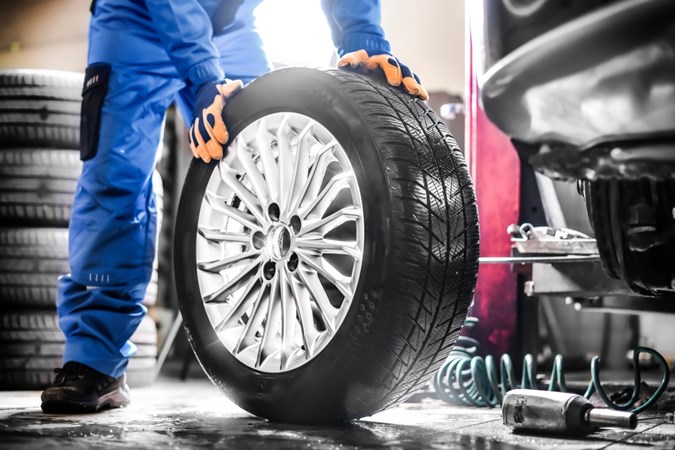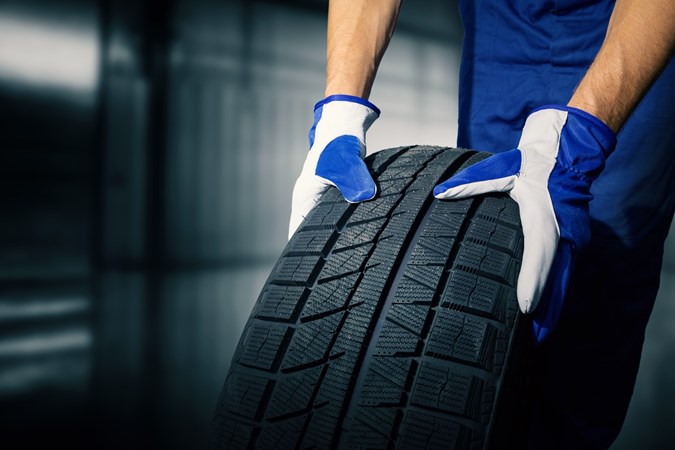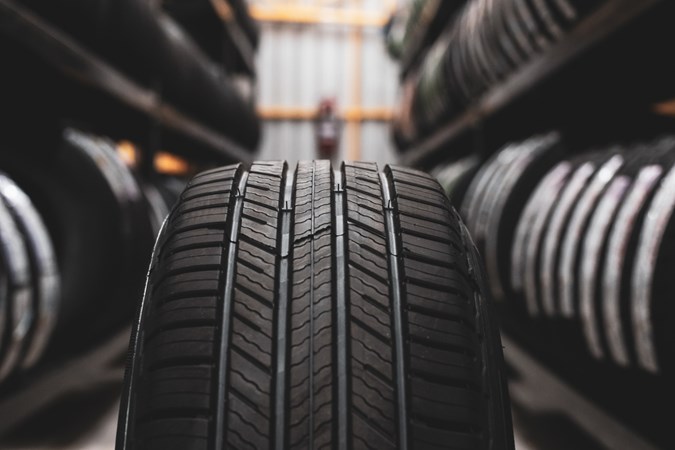Despite being often overlooked, tyres are one of the most important safety features of your car. As they are the only part of a car making contact with the road, it’s vital you have the best tyres that are in roadworthy condition to ensure you stay safe in all weather conditions.
Of course, choosing the correct tyres for your car can be confusing. For starters, an array of different brands are available, each having its own performance ratings and markings that you’ll need to decipher to make sure they are the right choice for your car.
Then there is the all-important price point for new tyres, with a choice of budget tyre brands, premium, and performance on offer. Finally, there is the question of whether you should buy summer, winter, or all-season tyres, a choice that will be affected by how you use your car and where you live.
To guide you through the process and to help you pick the right tyres for your car, this guide explains everything you need to know about car tyres to help you make a fully informed choice when it’s time to get a new set for your car.

Getting to grips with the basics of car tyres
The Ultimate Guide to Tyres
In this handy guide, we’ll cover all of the key questions you’ll need to ask before buying a new set. We cover everything from understanding the differences in tyre sizes, the best brands to buy, as well as how to look after them and how to measure tread depth to ensure they are roadworthy. Think of it as an essential guide to tyres that provides all the insight you’ll ever need.
Understanding tyres better
Once you’ve got a handle on the basics of car tyres, you may want to dig deeper into the different designs and technologies available. Remember that tyres are designed to work pretty much anywhere in a huge range of conditions, from blazing heat to biting cold, from bone dry to monsoon rains. Most tyres cover all the bases well enough, but there are some that are better suited for the extremes of wet and cold.
What is a winter tyre?
Find out how a winter tyre is different to a summer tyre and when you need to think about switching to a winter set in the colder months.
What are tyre sizes?
A simple guide that helps you understand the rather baffling codes used to describe tyre sizes and why it’s important to get the correct size of tyre for your car.
Understanding eco tyres
Tyre technology can help improve a car’s fuel economy which could be an important consideration for you at a time when fuel prices are so high. Find out how they work and whether or not you should consider getting some.
What is a run-flat tyre?
It used to be that every car had a spare wheel. But the need to save space and weight has seen some manufacturers replace spares with run-flat tyres. Our guide explains what a run-flat tyre does and whether they’re really necessary.

How to manage the expense of tyres
At a time when household budgets are being squeezed harder than ever before, it’s entirely understandable if you’re looking for ways to reduce the cost of running your car as much as possible. But make sure you’re fully informed before making any decisions and don’t compromise on safety.
Should I buy part-worn tyres?
Used, part-worn tyres cost a lot less than brand-new budget tyre brands and can seem like a great deal. But there’s a lot of things to bear in mind if you go shopping for them. Our guide explains everything you need to know.
Check out Parkers guide to Motoring Jargon
Tyre maintenance and cleaning
Just like any other part of a car, tyres need regular maintenance to ensure they perform at their best for as long as possible. Tyres in poor condition can ruin the look of an otherwise tidy car and can even devalue it. And that’s before you get into the safety implications.
How to check your tyres
You can learn a lot about the condition of a tyre just by looking at it. Giving it a once-over periodically will help make sure it’s safe and legal to be used. Our guide explains what to check for.
Why tyre tread depth is important
As part of checking your tyres periodically, you should always check the tread depth. If your tyres are close to or at the legal minimum of 1.6mm, your car will behave differently on the road, especially when braking, meaning they could be unsafe. Our guide explains why it’s important to check the tread depth of your tyres.
How to keep your tyres looking good
Tyre dressing makes your car’s rubber shine and is an easy way of making it look showroom fresh – especially helpful when selling your motor. Our guide highlights the best tyre dressings available to buy right now.
Keep an eye on tyre pressure
Tyres wear out quicker if they’re not inflated to the right pressure. Loss of pressure can also be a clue that there’s puncture or damage that’s letting air escape. Our guide recommends the best, most user-friendly tyre pressure gauges on the market.
Keep your tyres inflated
Having checked your car’s tyre pressures, you may need to inflate them. Fortunately, you don’t have to head off to the nearest petrol station and use its air line to do so. They are loads of air compressors that can do the job at home. Our guide picks out the ones we think are best.
Tyre inflator triple test: Sealey vs. Ring vs. Worx
We test three of the best electric tyre inflators to find out which one makes the best investment and should sit on your shelf for those occasions your car’s tyres need pumping up.
How to fix a puncture
If your car doesn’t have a spare wheel or run-flat tyres, you’re going to need a tyre repair kit. They’re really useful for effecting a temporary repair that allows you to continue your journey. Our guide recommends the ones that are most effective and easiest to use.
How to change the wheel on a pick-up truck
Swapping the spare wheel onto a car can be tricky enough, but it can be even more difficult with a pick-up truck. That’s because the truck has a lot of ground clearance, which makes jacking it up more difficult, and the wheel itself can weigh an absolute ton. Our guide details the tips and tricks that will make the process as quick and easy as possible.

Tyres tested and reviewed by Parkers
At Parkers, we test hundreds of cars every year and have learned that having the right tyres on your car can make a big difference to the driving experience, especially when the weather turns nasty. That’s why we regularly put different types of tyres through their paces, so we can tell you which ones are best.
All season tyres tested
All season tyres are Jacks of all trades, suitable for use in a wide range of temperatures and weather conditions. Our guide picks out the best buys.
Summer tyres tested
Summer tyres are designed to cope with hotter temperatures that would cause other types of tyre to overheat and fail. But they’re not ideal in winter. Our guide chooses the best ones you can currently get.
Winter tyres tested
If you live somewhere that gets really cold and snowy during winter, it’s wise to invest in a set of winter tyres for your car. They’re made from rubber that keeps gripping the road in temperatures that would cause a summer tyre to become too hard, and their tread is designed to cut through snow and standing water. Our guide highlights the ones that perform best.

FAQs
What are run-flat tyres, and are they worth it?
Run-flat tyres let you keep going after a puncture, usually for up to 50 miles at lower speeds. Handy for avoiding roadside drama, but they can cost more and might make the ride feel a bit stiff.
What is tyre pressure monitoring, and do I need it?
Tyre Pressure Monitoring Systems (TPMS) give you a heads-up when your tyres dip below the recommended pressure, helping to keep you safe. And since it’s mandatory on all new cars in the UK, you’ll find it fitted as standard.
How do I know what tyre size I need?
Check your car’s handbook or the sticker on the door frame for the right tyre size – it’s crucial for keeping you safe and getting the best performance out of your car.
What do the numbers on a tyre sidewall mean?
Those numbers on your tyre’s sidewall actually tell you a lot. Take ‘205/55 R16 91V’ for example:
- ‘205’ is the tyre’s width in millimetres.
- ’55’ shows the sidewall height as a percentage of the width.
- ‘R’ means it’s a radial tyre.
- ’16’ is the wheel diameter in inches.
- ’91’ indicates how much weight it can carry.
- ‘V’ shows the top speed it’s rated for.
Knowing what they mean can help you get the right tyres for your car.
Just so you know, we may receive a commission or other compensation from the links on this website - read why you should trust us.










